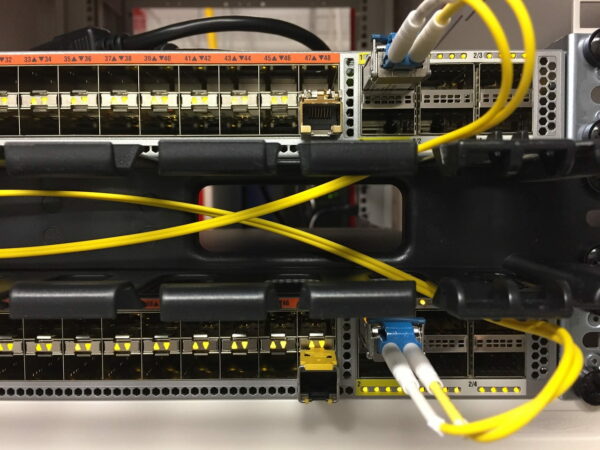✅ Last checked on
In today’s fast-paced digital landscape, the demand for efficient local network services has skyrocketed. From businesses to households, everyone relies on a seamless network connection to access the internet, share data, and communicate effectively. But beyond the basics of internet connectivity, local network services encompass a plethora of essential elements that often go unnoticed.
In this comprehensive guide, we delve into the world of local network services, exploring their intricacies and highlighting their significance in our interconnected world.
Understanding the Foundation: What Are Local Network Services?

Local network services, often abbreviated as LAN services, form the backbone of our digital interactions. At their core, these services are responsible for connecting multiple devices within a specific geographical area, such as a home, office, or campus, to facilitate data sharing and communication.
While the internet serves as the global highway of information, local network services are the intricate web of streets that connect devices within a confined space.
The Role of LAN Services in Modern Life
The importance of local network services cannot be overstated. In today’s world, where remote work, online education, and smart home devices have become the norm, a robust local network is imperative. Here’s how LAN services impact various aspects of our lives:
1. Business Operations
In the corporate realm, LAN services enable seamless collaboration among team members. Employees can share files, access shared resources, and conduct video conferences with minimal latency. This efficiency translates into enhanced productivity and, ultimately, increased profitability for businesses.
2. Home Entertainment
The era of smart TVs, streaming platforms, and gaming consoles has transformed home entertainment. LAN services ensure that your favorite content streams seamlessly, without buffering interruptions. Moreover, online gaming enthusiasts benefit from low-latency connections, providing a competitive edge.
3. Education
The pandemic has accelerated the adoption of online learning. LAN services play a pivotal role in ensuring students and educators can access virtual classrooms, share resources, and engage in interactive lessons without disruptions.
Unveiling the Components of LAN Services
To truly appreciate the complexity of local network services, it’s essential to understand their key components:
1. Routers
Routers are the traffic controllers of your local network. They determine how data packets are forwarded between devices and ensure an efficient flow of information. Modern routers are equipped with advanced features like Quality of Service (QoS) to prioritize certain types of traffic, such as video calls or gaming, for a seamless user experience.
2. Switches
Switches act as intermediaries between devices within a local network. They manage data traffic more efficiently than traditional hubs, ensuring that data is delivered only to the intended recipient, reducing network congestion.
3. Access Points
Access points (APs) are vital for wireless connections. They provide Wi-Fi access to devices within their range, allowing for wireless connectivity. Proper placement and configuration of APs are critical for ensuring adequate coverage and signal strength.
4. Network Security
Securing your local network is paramount in today’s digital age. LAN services often include robust security features like firewalls, intrusion detection systems, and encryption protocols to safeguard your data from potential threats.
The Evolution of LAN Services
As technology advances, so do local network services. The evolution of LAN services has brought about several noteworthy trends and developments:
1. Gigabit Ethernet
Gigabit Ethernet has become the standard for wired connections, offering blazing-fast speeds of up to 1 Gbps. This technology is particularly crucial for data-intensive tasks and is commonly found in modern LAN setups.
2. Mesh Networks
Mesh networks have revolutionized wireless connectivity. By deploying multiple access points strategically, mesh networks eliminate Wi-Fi dead zones, ensuring seamless coverage throughout your home or office.
3. Cloud Management
Cloud-based management solutions have simplified the administration of local network services. Businesses and homeowners can now remotely monitor and configure their LAN services, enhancing convenience and control.
Optimizing Your Local Network Services
To harness the full potential of local network services, consider the following tips:
1. Regular Updates
Keep your router’s firmware up to date to benefit from security patches and performance improvements. Staying current is essential to safeguarding your network.
2. Quality Hardware
Invest in quality routers, switches, and access points. Cutting corners on hardware can lead to network inefficiencies and frustrations.
3. Network Segmentation
Segment your network to enhance security and performance. Isolate IoT devices from critical business systems to minimize potential vulnerabilities.
4. Professional Configuration
For businesses, enlisting the services of IT professionals for network setup and maintenance can ensure optimal performance and security.
Conclusion
In conclusion, local network services are the unsung heroes of our digital age. They enable the seamless functioning of our interconnected world, from powering businesses and education to enhancing home entertainment. By understanding the intricacies of LAN services and staying abreast of the latest trends, you can ensure that your local network is not just a conduit for the internet but a reliable and efficient asset that enhances your daily life.
Remember, the world of local network services is constantly evolving. Embrace these changes, optimize your setup, and enjoy a future-proof network that elevates your digital experiences.